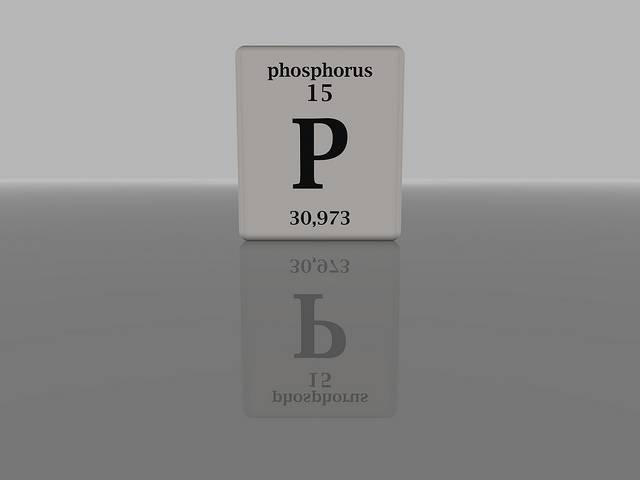Mining for Fertilizer: How Mosaic Manages Environmental Impacts
By Gina-Marie Cheeseman

Originally published on TriplePundit
There are over seven billion people in the world and every one of them needs to eat to live. Feeding a growing world population means that crop yields have to be improved. Fertilizers are important to improve crop yields in order to feed a growing global population.
As the world population grows, the demand for food will continue to grow while the amount of cultivated land will not significantly increase, making methods to improve crop production important. American farmers are the most productive in the world, according to the U.S. Geological Survey (USGS). The U.S. is a big producer of fertilizers for both domestic use and to be exported. The USGS maintains that applying mineral fertilizers in “increased quantities…is one of the easiest and quickest ways to improve soil fertility.”
“Every plant requires three nutrients to grow and thrive—nitrogen, potassium and phosphorus,” explains Benjamin Pratt, Vice President of Corporate Public Affairs at the Mosaic Company, who spoke to TriplePundit.
Some fertilizers are phosphorus based. Phosphorus is a mineral, mined mainly as phosphate rock, and phosphorus is used primarily to grow crops. It is a necessary element for both plant and animal nutrition. The U.S. is the third-largest producer of phosphate, and the third-biggest phosphorus fertilizer user in the world. Minnesota-based Mosaic is the largest phosphate producer in the world. The company mines phosphate rock from almost 200,000 acres of land it owns in Central Florida. Its products are processed into crop nutrients and shipped around the world.
Phosphate rock is typically found 15 to 50 feet below the ground in a mixture of phosphate pebbles, sand and clay called phosphate matrix. Pratt explained that there are several different ways to mine phosphate rock. Mosaic mostly uses “very large machines called draglines to remove the layer of earth above the phosphate seam and then to remove a matrix of phosphate rock, sand and clay, which first goes to a pit to be separated,” he said. The phosphate rock is sent through pipelines to a processing facility which turns it into phosphate fertilizer.
How Mosaic manages the environmental impacts of phosphorus mining
Although phosphorus-based fertilizers are needed to feed a growing world population, there are environmental impacts associated with mining phosphorus. The mining of the needed nutrient “requires the use of land, water and energy to create products that are essential to agricultural productivity,” Pratt said. But Mosaic aims to minimize its environmental impact “by recycling process water, developing energy through co-generation of electricity, minimizing waste and reclaiming every acre of mined land,” he added.
Fertilizers are needed to grow crops, but excess fertilizer can run off and enter natural waterways. When phosphates are present in excess in waterways problems can result such as algal blooms and even contamination of drinking water. Mosaic partners with organizations to reduce fertilizer runoff. The company is a supporter and promoter of a program called the 4R Nutrient Stewardship Program framework which helps farmers achieve cropping system goals. What the program does is synthesize best management practices for fertilizer into a framework which include optimizing yields, while maximizing profit and sustainability. The 4Rs of the framework consist of the right nutrient source, at the right rate, at the time time and in the right place.
Mosaic also supports The Nature Conservancy’s piloting of a nutrient application standard that encourages service providers, agricultural retailers and other certified professionals in three states (Indiana, Ohio and Michigan) where surrounding waters drain into the Western Lake Erie Basin to adopt the 4Rs best practices. Lake Erie is a drinking water source for millions of people and over half of all the fist in the Great Lakes live in its waters. The Western Lake Erie basin also happens to be one of the most productive areas to grow food in the U.S.
The company acknowledges that mining and processing phosphate is energy and water intensive. “We work carefully to maximize efficiencies and minimize our use of energy and natural resources, and have made significant progress in reducing Mosaic’s environmental footprint,” the company proclaims on its website. The approach to water management is one they refer to as “every drop counts” and the goal is to recycle or reuse water whenever possible. Mosaic has decreased its groundwater use in Central Florida by more than 50 percent over the last 20 years, and recycles or reuses about 90 percent of the water at its Florida phosphate facilities.
The company has a goal to reduce its total energy use by 10 percent per ton of finished ton by 2020. Co-generation is one way that Mosaic can reduce its energy use. Cogeneration starts in its manufacturing operations, where sulfuric acid is used to separate phosphorus from raw material inputs. It is a process that creates a big amount of waste heat. That waste heat is recovered and converted to steam which is sent to turbine generators and converted to electricity to power its manufacturing facilities and mines.
What about mined lands? Mosaic works to return the land to a productive use. It is required to do so by Florida law. The process of land reclamation starts before phosphate mining starts. In four different Florida counties, it has partnered with local and state governments to create local and state parks where people can enjoy recreational activities such as fishing and camping. In 2015, the company planted over 1.2 million trees on reclaimed land.
Mosaic proves that a phosphorus mining company can work to minimize environmental impacts and be the largest phosphate producer on the planet.
Gina-Marie is a freelance writer and journalist armed with a degree in journalism, and a passion for social justice, including the environment and sustainability. She writes for various websites, and has made the 75+ Environmentalists to Follow list by Mashable.com.

